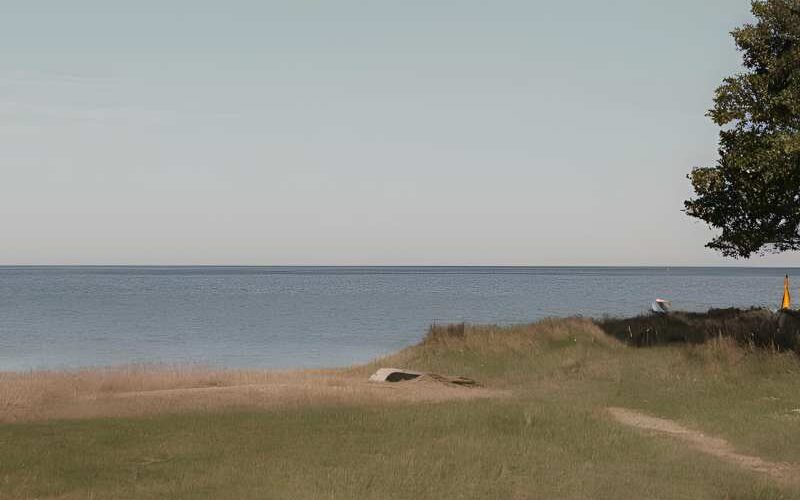Stora Alvaret is a unique and vast limestone plateau located on the island of Öland in Sweden. It covers an area of approximately 260 square kilometers, making it one of the most significant and unique natural landscapes in northern Europe. This extraordinary area is known for its distinctive flora and fauna as well as its rich cultural history. Stora Alvaret has become an important part of Öland’s identity and annually attracts thousands of visitors who wish to experience its distinctive landscape.
Geology and Landscape
Stora Alvaret is the result of a long geological history that stretches back millions of years. The limestone layer, typical of the area, was formed during the Ordovician period, about 450 million years ago. The landscape is characterized by a thin soil layer that rests directly on the limestone bedrock, creating a barren and flat terrain with sparse vegetation.
The unique geological substrate has given rise to a special type of landscape called alvar, which is one of the largest of its kind in the world. The thin soil layer and extreme climate with hot summers and cold winters contribute to only the most adaptable plants being able to survive here. The flat limestone surfaces are often cracked and lined with small pockets of soil where plants can take root.
Flora and Fauna
Despite its seemingly inhospitable conditions, Stora Alvaret hosts an impressive diversity of plant and animal life. The area is home to over 400 species of vascular plants, many of which are rare and endemic. Here, there is a rich occurrence of orchids, including species such as fly orchid, early marsh orchid, and fragrant orchid, all adapted to the calcareous substrate.
In addition to the abundant flora, Stora Alvaret is also an important habitat for many animal species. The open landscape and low vegetation make it an ideal place for birdwatching, where species such as black-tailed godwit, hen harrier, and curlew can be seen. The insect life is also rich, with several unusual butterflies and beetles thriving in the alvar environment.
Cultural Heritage
Stora Alvaret is not only a natural treasure but also an area of great cultural significance. The landscape is rich in archaeological sites, including ancient stone structures, burial mounds, and old farmsteads. These historical remains provide insight into the lives of the people who lived here thousands of years ago and how they adapted to the harsh environment.
One of the most well-known archaeological sites on Stora Alvaret is Eketorp Fortress, a reconstructed ancient fort used during the Iron Age and medieval periods. Here, visitors can explore the reconstructed buildings and learn more about the historical inhabitants’ lives and livelihoods. Eketorp is a living museum where visitors can participate in activities and demonstrations that provide an authentic experience of the past.
Conservation and Tourism
Aware of Stora Alvaret’s ecological and cultural value, the area is protected as part of the UNESCO World Heritage Site designated to Southern Öland’s agricultural landscape. Conservation efforts aim to protect the unique biodiversity and historical sites while promoting sustainable tourism.
Visitors to Stora Alvaret can enjoy a variety of activities, from hiking and birdwatching to exploring the ancient ruins. Several marked trails make it possible to discover the alvar’s beauty and history up close. A popular trail is the “Path over the Alvar” which takes visitors through some of the most scenic and interesting parts of the area.
To minimize the impact on the sensitive environment, visitors are encouraged to follow certain guidelines. It is important to stay on the marked trails, avoid picking plants, and not disturb the wildlife. By showing respect for nature and its inhabitants, we can all contribute to preserving this unique place for future generations.
Future Perspectives
The future of Stora Alvaret looks promising thanks to ongoing conservation efforts and the growing interest in nature and cultural tourism. By combining scientific research with practical management, we can continue to protect and understand this unique landscape. It is also important to continue educating the public about the importance of conservation and sustainable use of natural resources.
Research on Stora Alvaret focuses on understanding the ecological processes that govern plant and animal life as well as how climate change may affect the area in the future. By monitoring changes in flora and fauna, researchers can identify threats and develop strategies to counteract them. Collaboration between local authorities, research institutions, and non-profit organizations is crucial to ensuring that Stora Alvaret remains a living and thriving part of Öland’s heritage.
